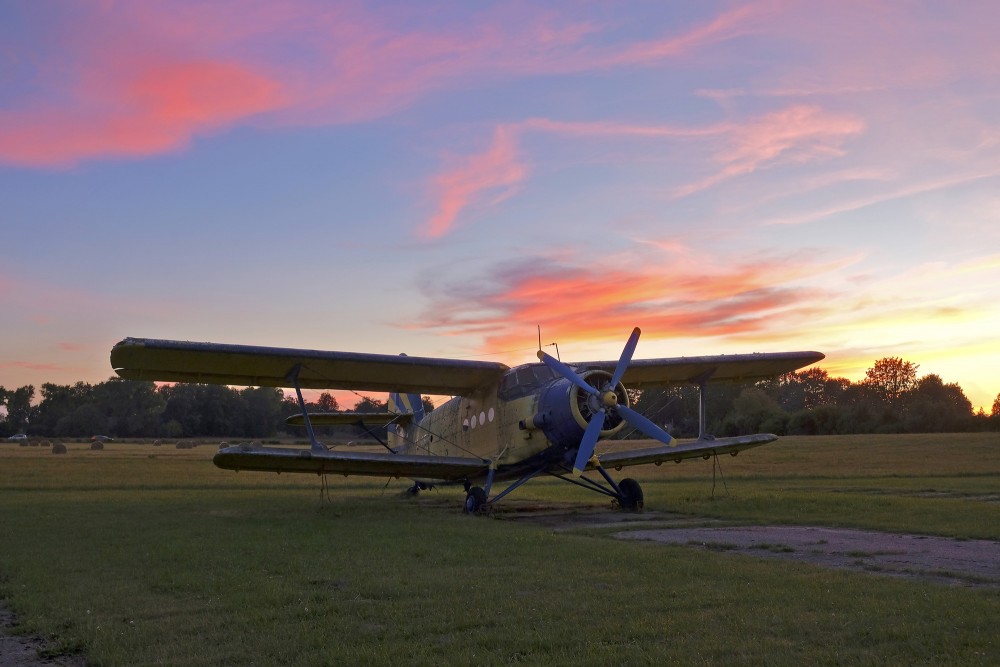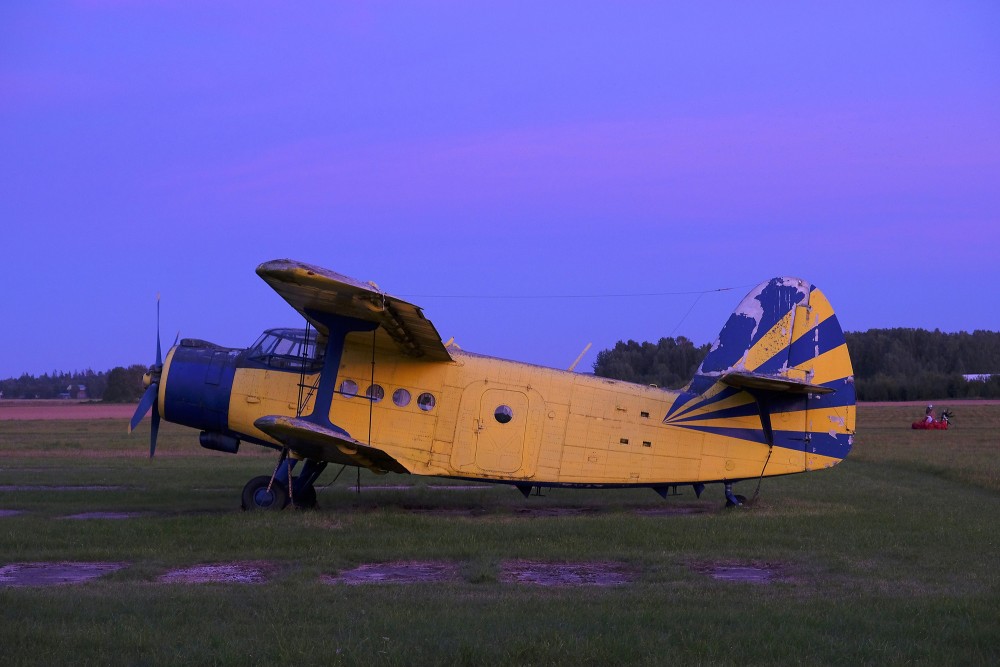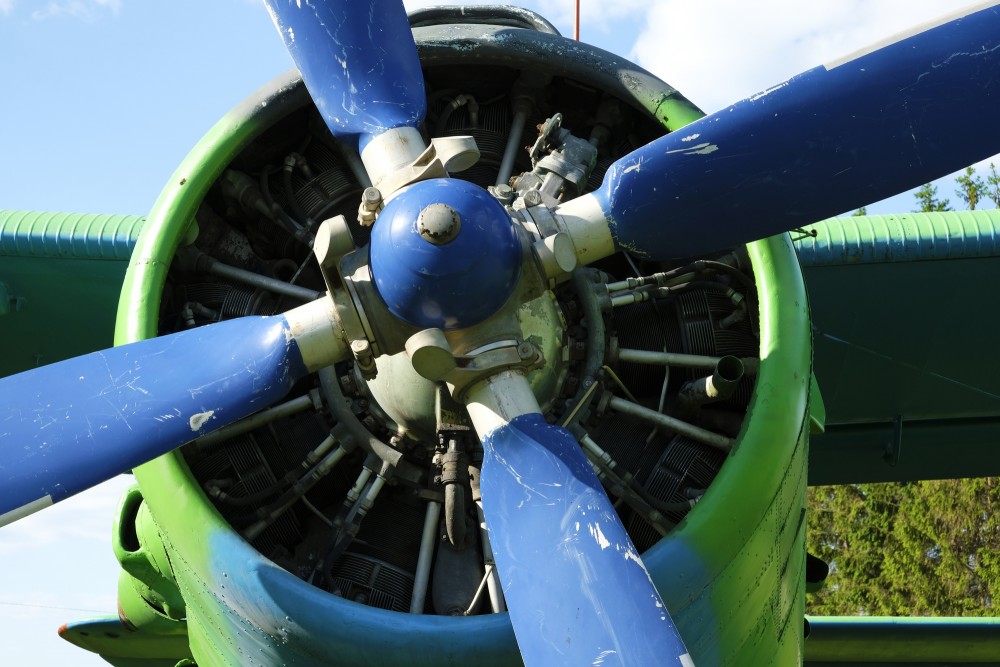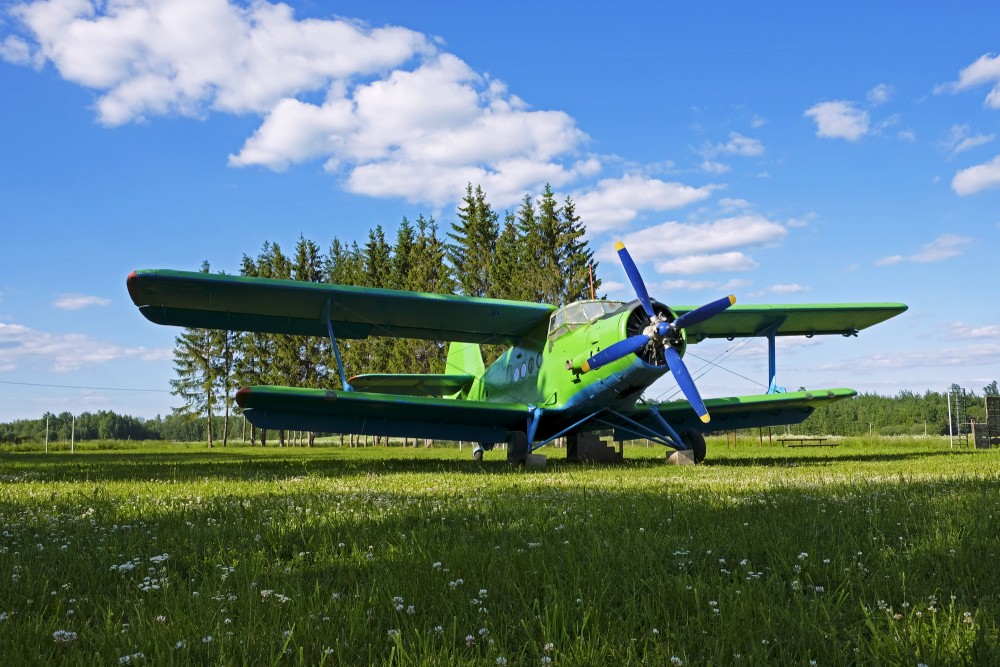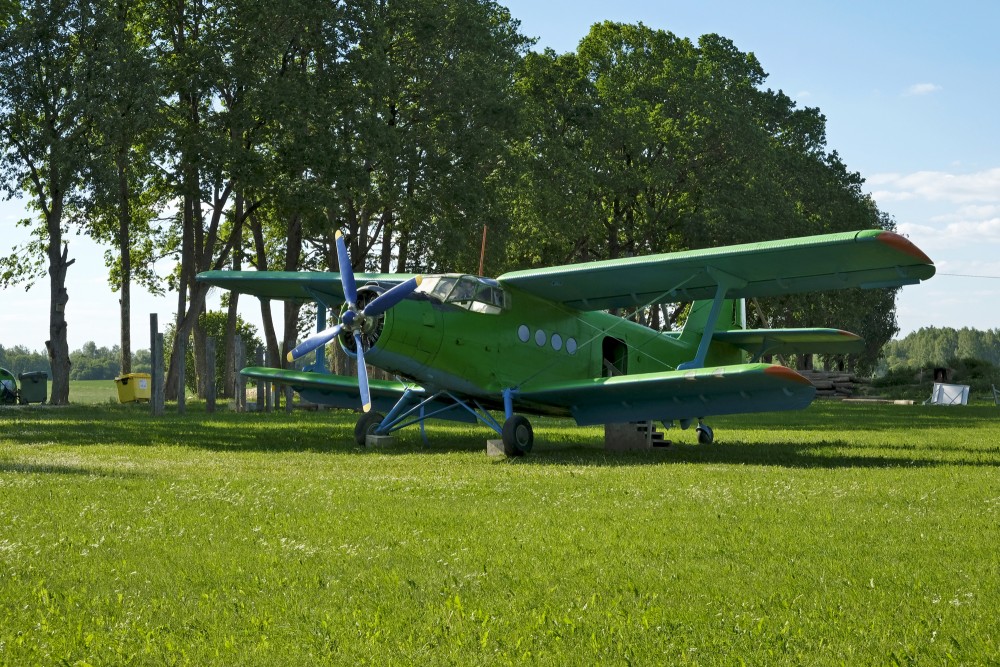Antonov An-2
The Antonov An-2 (Russian nickname: "Annushka" or "Annie"; "kukuruznik"—corn crop duster; USAF/DoD reporting name Type 22, NATO reporting name Colt) is a Soviet mass-produced single-engine biplane utility/agricultural aircraft designed and manufactured by the Antonov Design Bureau beginning in 1946. Its remarkable durability, high lifting power, and ability to take off and land from poor runways have given it a long service life. The An-2 was produced up to 2001 and remains in service with military and civilian operators around the world.
The An-2 was designed as a utility aircraft for use in forestry and agriculture. However, the basic airframe is highly adaptable and numerous variants of the type have been developed; these include hopper-equipped versions for crop-dusting, scientific versions for atmospheric sampling, water-bombers for fighting forest-fires, flying ambulances, float-equipped seaplane versions and lightly armed combat versions for dropping paratroops. The most common version is the An-2T 12-seater passenger aircraft. All versions (other than the An-3 and the An-2-100) are powered by a 750 kW (1,010 hp) nine-cylinder Shvetsov ASh-62 radial engine, which was developed from the Wright R-1820. The An-2 typically consumes 2.5 l/min (0.66 US gal/min; 0.55 imp gal/min).
Design and development
Origins
The Antonov An-2 was designed to meet a 1947 Soviet Ministry of Forestry requirement for a replacement for the much lighter, largely wooden-airframed Polikarpov Po-2, which was used in large numbers in both agricultural and utility roles. Antonov designed a large single bay biplane of all-metal construction, with an enclosed cockpit and a cabin with seats for twelve passengers. The first prototype, designated SKh-1 and powered by a Shvetsov ASh-21 radial engine, flew on 31 August 1947. The second prototype was fitted with a more powerful Shvetsov ASh-62 engine, which allowed the aircraft's payload to be significantly increased from 1,300 to 2,140 kg (2,870 to 4,720 lb), and in this form it was ordered into production.
Initial Soviet production was at State Factory 473 in Kiev, Ukrainian SSR, where the bulk of up to 5,000 units had been produced by 1960. Later Soviet production (after 1965, of model An-2M especially) was at State Factory 464 at Dolgoprudniy, Russian SFSR. After 1960, however, most An-2s were constructed at Poland's WSK factory in Mielec; it is believed that over 13,000 aircraft were built in Poland before principal manufacturing activity ended during 1991. However, up until 2001, limited production was undertaken using remaining stocks of components, spares and maintenance coverage, such as a small batch of four aircraft that were produced for Vietnam. China also builds the An-2 under licence as the Shijiazhuang Y-5. It has been occasionally and erroneously reported that there was East German production of the An-2, however, while An-2s often underwent extensive refurbishment in East German facilities, no new aircraft were constructed there.
The An-2 is commonly used as a light utility transport, parachute drop aircraft, agricultural work and other tasks suited to a large slow biplane. Its slow flight and good short field performance make it suited for short, unimproved fields, and some specialized variants have also been built for cold weather and other extreme environments. The Guinness Book of World Records states that the 45-year production run for the An-2 was for a time the longest ever for any aircraft and challenged the well over two decades-long run of the much lighter, late-1920s origin Polikarpov Po-2 biplane it was intended to replace. But the An-2's production duration run record was exceeded by the four-turboprop, 1954-origin, Lockheed C-130 Hercules military transport.
Further development
During the early 1980s, Antonov experimented with a development of the An-2 powered by a modern turboprop engine. The unit used was a 1,080-kilowatt (1,450 hp) Glushenkov engine. Aircraft fitted with this engine had a longer, more streamlined nose to accommodate it. It received the designation of Antonov An-3.
During 2013, Antonov announced that it had successfully flown for the first time a new version of the An-2, dubbed the An-2-100, which was fitted with a three-blade reversible propeller and a 1,100-kilowatt (1,500 shp) Motor Sich MS-14 turboprop running on kerosene rather than Avgas, which is no longer produced in CIS countries. That same year, the company stated that it had received orders for upgrading "hundreds" of the An-2 planes still in operation in Azerbaijan, Cuba and Russia to the An-2-100 upgrade version.
The Siberian Research Institute of Aviation (SIBNIA) has test flown a highly modified Antonov An-2 with carbon fibre winglet-like braces and carbon fibre wing structures. It was equipped with a five-bladed turboprop engine, most probably the Honeywell TPE331 already installed on a modernized version of the An-2 that entered service in 2014. According to Russian aviation company Sukhoi, this aircraft was built to demonstrate the aerodynamic and structural changes that were planned for an eventual An-2 replacement announced on 10 June 2015. The autoclave-cured carbonfibre composite materials – including wing panels, spars and ribs – were produced by the Novosibirsk Aviation Plant. Sukhoi says the design change improved the speed of the An-2 by 50%, and testing also has shown the minimum flying speed of the aircraft is "close to zero".
Design
The Antonov An-2 is a mass-produced single-engine biplane that has been commonly used as a utility and agricultural aircraft. It is deliberately furnished with a minimum of complex systems. The crucial wing leading edge slats that give the aircraft its slow flight ability are fully automatic, being held closed by the airflow over the wings. Once the airspeed drops below 64 km/h (40 mph), the slats will extend because they are on elastic rubber springs. Under typical conditions, the take-off is complete within 170 m (560 ft) while the landing run requires 215 m (705 ft); these figures will vary dependent upon various factors, such as the aircraft's take-off/landing weight, the external air temperature, surface roughness, and headwind.
The An-2 is equipped with various design features which make it suitable for operation in remote areas with unsurfaced airstrips. It is fitted with a pneumatic brake system (similar to those used on heavy road vehicles) to stop on short runways, along with an air line attached to the compressor, so the pressure in the tires and shock absorbers can be adjusted without the need for installing specialised equipment. The batteries, while sizable, are relatively easy to remove, so the aircraft does not need a ground power unit to supply power for starting the engine. Likewise, there is no need for an external fuel pump to refuel the aircraft as it is provided with an inbuilt onboard pump, which allows the tanks to be filled from simple fuel drums.
The An-2 has no stall speed, a fact which is quoted in the operating handbook. A note from the pilot's handbook reads: "If the engine quits in instrument conditions or at night, the pilot should pull the control column full aft and keep the wings level. The leading-edge slats will snap out at about 64 km/h (40 mph) and when the airplane slows to a forward speed of about 40 km/h (25 mph), the airplane will sink at about a parachute descent rate until the aircraft hits the ground."[4] As such, pilots of the An-2 have stated that they are capable of flying the aircraft in full control at 48 km/h (30 mph) (as a contrast, a Cessna four-seater light aircraft has a stall speed of around 80 km/h (50 mph)).[citation needed] This slow stall speed makes it possible for the aircraft to fly backwards relative to the ground: if the aircraft is pointed into a headwind of roughly 56 km/h (35 mph), it will travel backwards at 8 km/h (5 mph) whilst under full control.
The An-2's ability, looks and flying characteristics, and its status as one of the world's biggest single-engined production biplanes, mean that demand for the An-2 is increasing in Western Europe and the United States, where they are prized by collectors of classic aircraft, making it an increasingly common sight at airshows. Many western countries prohibit the use of the An-2 commercially because the aircraft has not been certified by the relevant national aviation authorities. These restrictions vary by country, but all prevent the An-2 being used for any 'for profit' purpose, with the exception of the United States, where An-2s imported since 1993 are limited to experimental certification, but PZL-built An-2s are exempt from this restriction due to a bilateral agreement with Poland.
en.wikipedia.org
